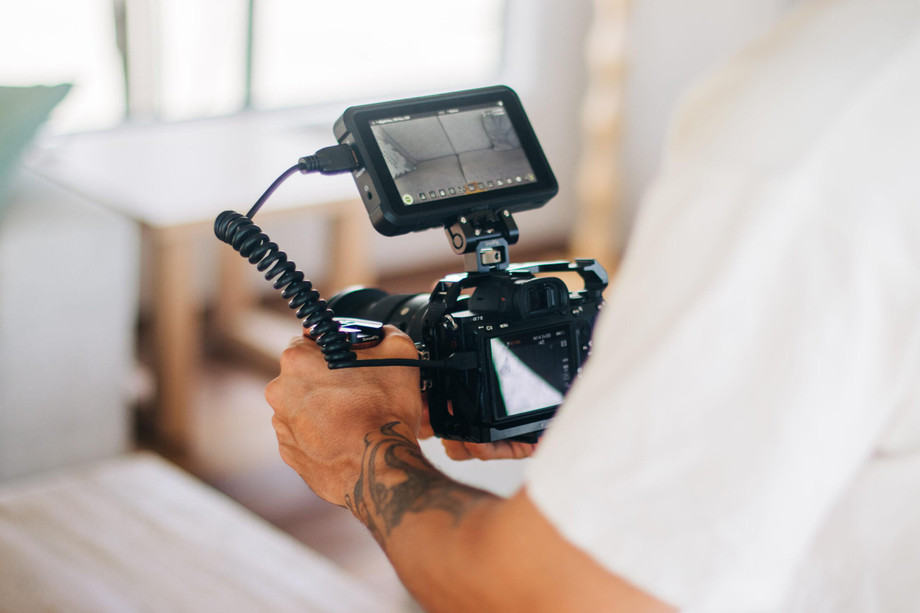Videography, the art and science of capturing moving images and sound, has become an integral part of modern storytelling, entertainment, and communication. From personal videos and social media content to professional films and advertisements, videography plays a pivotal role in conveying stories, emotions, and messages. In this article, we will delve into the world of videography, exploring its history, techniques, equipment, and its evolving role in today's multimedia landscape.
A Brief History of Videography
The history of videography is closely linked to the development of video recording and playback technology. Here are some key milestones in the evolution of videography:
Early Experiments (19th Century): The foundation for videography was laid in the 19th century with inventors like Louis Le Prince and Thomas Edison conducting experiments with motion pictures.
Birth of Cinematography (Late 19th Century): The Lumière brothers are often credited with the birth of cinematography in the late 1800s when they introduced the Cinématographe, a device capable of both recording and projecting motion pictures.
Emergence of Video Cameras (20th Century): The 20th century saw the development of video cameras, starting with early models like the Ampex VRX-1000 in the 1950s. These cameras recorded video signals on magnetic tape.
Videotape Formats (1960s-1980s): The 1960s and 1970s witnessed the introduction of various videotape formats, such as VHS and Betamax, that made home videography accessible to the public.
Digital Revolution (Late 20th Century): The late 20th century saw the transition from analog to digital videography, making editing, storage, and distribution more accessible and efficient.
Smartphones and Consumer Videography (21st Century): The proliferation of smartphones equipped with high-quality cameras revolutionized videography, enabling anyone to become a videographer.
Videography Techniques
Creating compelling videos involves mastering various techniques to capture and convey a story effectively. Here are some fundamental videography techniques:
Composition: Effective composition involves framing your shots to create visually appealing and balanced images. Techniques such as the rule of thirds, leading lines, and framing help guide the viewer's eye and convey the desired message.
Camera Movement: Techniques like panning, tilting, tracking, and zooming can add dynamism and depth to your shots. Steady camera movement requires skill and equipment like tripods, gimbals, and sliders.
Lighting: Proper lighting is crucial for setting the mood and enhancing the visual quality of your videos. Understanding the principles of key, fill, and backlighting is essential for achieving professional results.
Focus and Depth of Field: Controlling focus and depth of field can help draw the viewer's attention to specific subjects or elements within a frame, creating cinematic effects.
Framing and Shot Types: Different shot types, such as wide shots, close-ups, and aerial shots, have specific applications in storytelling and visual communication.
Color Grading: The process of color grading involves enhancing or altering the color and tone of your video to create a specific mood or style.
Audio: High-quality audio is as important as video. Techniques like recording clear dialogue, using music effectively, and minimizing background noise are essential for achieving professional results.
Videography Equipment
The choice of equipment significantly influences the quality and style of videography. Here are some key pieces of equipment commonly used by videographers:
Camera: Videography cameras range from professional cinema cameras to consumer-grade camcorders and DSLRs. High-end cameras offer features like 4K resolution, interchangeable lenses, and advanced image sensors for superior image quality.
Lenses: Lenses allow videographers to control focus, depth of field, and framing. Different lenses are suitable for various shooting scenarios, from wide-angle to telephoto.
Tripods and Stabilizers: Tripods provide stability and control over camera movement, while gimbals, sliders, and steadicams allow for smooth and dynamic shots.
Microphones: High-quality microphones, such as shotgun, lavaliere, and handheld microphones, are essential for capturing clear and professional audio.
Lighting Equipment: Lighting kits, including softboxes, LED panels, and reflectors, help videographers control and shape light for the desired look.
Editing Software: Post-production is a crucial part of videography. Editing software like Adobe Premiere Pro, Final Cut Pro, and DaVinci Resolve allows videographers to fine-tune their footage, add effects, and craft a polished final product.
The Evolving Role of Videography
Videography has evolved in response to changes in technology, audience preferences, and the ways in which content is consumed. Here are some ways in which videography is evolving:
Social Media Content: Short-form videos, particularly on platforms like TikTok, Instagram, and YouTube, have become a dominant form of content. Videographers are adapting their techniques to create engaging content for these platforms.
Live Streaming: Live streaming has gained popularity for events, product launches, and behind-the-scenes content. Videographers are learning to work in real-time and engage with audiences directly.
Virtual Reality (VR) and 360-Degree Video: VR and 360-degree videos offer immersive experiences. Videographers are exploring these new formats for storytelling and marketing.
Drone Videography: Drones equipped with cameras have opened up new possibilities for aerial videography. They are used for capturing breathtaking landscapes, architectural shots, and more.
Augmented Reality (AR) and Visual Effects: AR and visual effects are increasingly integrated into videography to enhance storytelling and create captivating visuals.
Video Marketing: Businesses are utilizing videography for marketing purposes more than ever, creating promotional videos, product demonstrations, and customer testimonials.
For more info:-





Comments